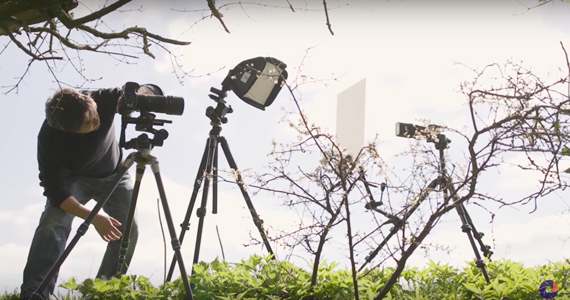One of the best ways to shoot macro is in a studio with a flash, which allows you to capture every detail of your subject without distraction. But, since a core tenant of nature photography is “do not disturb,” serious nature macro photographers need to find another way. That’s why nature photographer Paul Morgan has put together this mini-series detailing how to create a perfect mobile macro studio. He describes the equipment you’ll need and possible workarounds that might come up on location:
“One solution is to take the studio to the field.”
The main challenges surrounding macro field photography center around lugging equipment around, setup/tear down time, and expense. Morgan’s kit takes all of these into consideration, with the added benefit that it’s easy to clean (important when photographing critters who make deposits). It’s not the most lightweight of options, but it is simple to create and can be done fairly inexpensively.
The Basic Gear
- A camera with decent close focus capabilities, the ability to shoot in manual, and can trigger a flash.
- A macro lens with at least a 90-100mm focal length. These will give you a 1:1 magnification at a decent working distance.
- Two lights that can fire in manual and a means to control them. (These can be speedlights or softboxes.)
- Some kind of white, diffusing material for the background that you can back light. You’ll also need a piece for softening your fill flash. (If you choose to use a softbox for your back light you can simply use its diffusion covering.)
- Stands and clamps to hold everything in position. You’ll also probably want a tripod for your camera.
While none of this gear needs to be particularly expensive, you’ll definitely cut down your setup and tear down time by investing in softboxes (rather than speedlights). Also, the more expensive flash systems do tend to have a better battery capacity and a higher quality of light.
Morgan’s setup is pretty simple and yields fantastic results. It basically consists of putting a subject on a white, back-lit background with a bit of key light coming from the front. The results not only provide ample fine detail for biological documentation, they’re also downright beautiful.
Of course, photographing plants is a lot easier than critters that move around; macro photographs require close focusing and a shallow depth of field. But Morgan goes on in later episodes to address this.
The whole aim of this approach, however, is to create as little disturbance to the subjects and environment as possible. To this end, Morgan says it’s generally best to set up your gear before looking for subjects, keep your subjects for only a few a minutes, and if possible, shoot in the shade.
Like This Article?
Don't Miss The Next One!
Join over 100,000 photographers of all experience levels who receive our free photography tips and articles to stay current:








Leave a Reply